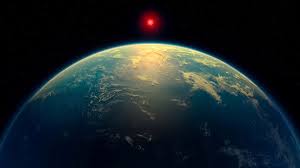James Webb Space Telescope : Evidence Of Extraterrestrial Life On a Distant Exoplanet

Scientists have found tentative but strong evidence of possible extraterrestrial life on a distant exoplanet named K2-18b, located 124 light years away from Earth in the Leo constellation.
- The James Webb Space Telescope (JWST), launched in December 2021, is the largest and most powerful space observatory built through a collaboration between NASA, European Space Agency (ESA), and Canadian Space Agency (CSA).
- JWST orbits the L2 Lagrange Point, about 5 million km beyond Earth, enabling a stable position for deep-space observation.
- The telescope operates primarily in the infrared spectrum and is equipped with components such as:
- Optical Telescope Element (OTE) – collects light from distant objects.
- Integrated Science Instrument Module (ISIM) – houses all cameras and instruments.
- Sunshield – protects sensitive instruments from solar radiation.
- Spacecraft Bus – provides necessary operational support.
- The Cambridge University research team, led by Nikku Madhusudhan, studied the planet’s atmosphere and detected chemical signatures of gases like dimethyl sulphide (DMS) and dimethyl disulphide (DMDS).
- On Earth, these gases are known to be produced only by marine phytoplankton and certain bacteria, raising the possibility of biological activity on K2-18b.




